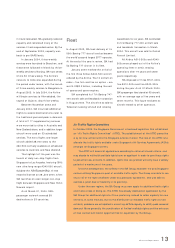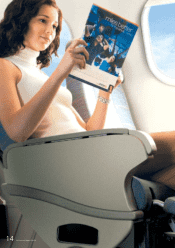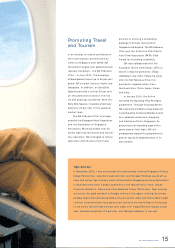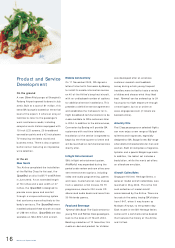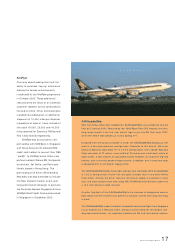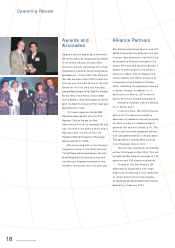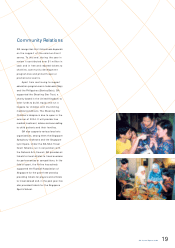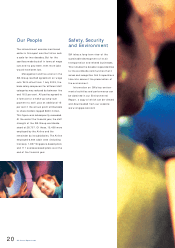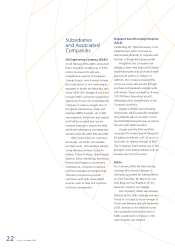Singapore Airlines 2004 Annual Report Download - page 25
Download and view the complete annual report
Please find page 25 of the 2004 Singapore Airlines annual report below. You can navigate through the pages in the report by either clicking on the pages listed below, or by using the keyword search tool below to find specific information within the annual report.
SIA Annual Report 03/04 23
In December 2003, SilkAir launched
twice-weekly services to Fuzhou in China.
However, in January 2004, it suspended
its twice-weekly services to Chittagong.
SilkAir operated charter services to
a number of regional destinations,
including five to Bodh Gaya (India), four
to Jaipur (India), three to Wuhan (China),
two each to Terengganu (Malaysia),
Guilin (China), Vientiane (Laos) and
Darwin (Australia), and one to Brunei.
With the arrival of its sixth Airbus
A320-200 in July 2003, the SilkAir fleet
now comprises 10 aircraft. The other
four are Airbus A319-100s. During the
period under review, SilkAir achieved
200,000 engine flight hours and
100,000 engine flight cycles, operating
an all-V2500 powered Airbus single
aisle fleet. In recognition of the excellent
operational reliability of its V2500-
powered fleet, SilkAir was awarded the
International Aero Engine (IAE) Award
at the Asian Aerospace Show.
SilkAir was also presented with the
Singapore Tourism Board Award for the
“ Best Singapore Travel Experience –
China” for its efforts in promoting
Chengdu, to which SilkAir has flown
twice weekly since July 2002.
Singapore Airport Terminal Services
(SATS)
It was also a year of succession at SATS,
with a number of new appointments at
its top management levels. On 19 May
2003, Mr Edmund Cheng Wai Wing
succeeded Dr Cheong Choong Kong as
Chairman of the SATS Board. On the
same day, Mr Chew Choon Seng, CEO
of SIA, succeeded Mr M ichael Tan Jiak
Ngee as Deputy Chairman. Mr Tan still
serves as a Director of the Board. On
2 January 2004, Mr Ng Chin Hwee
assumed the position of Group CEO,
following the retirement of CEO SATS,
Mr Prush Nadaisan.
In 2004, the Singapore Government
introduced a host of measures aimed at
maintaining Singapore’s status as a
regional aviation hub, including opening
ground handling operations at Changi
Airport to a third licensee and cuts in
ground handling fees. These moves,
combined with the emergence of several
low cost carriers operating to or based in
Singapore, have created a new level of
cost-consciousness in the airline industry.
In addressing these changes in the
competitive landscape, SATS’ commit-
ment to excellence in service remains
unfaltering. SATS was awarded the
Class ‘A’ security certification from the
Technological Assets Protection
Association (TAPA) during the year in
review and won a $26 million, two-
year contract to provide security
screening services at Changi Airport.
SATS also introduced premium class
check-in facilities for First and Business
Class passengers at Terminal 1 for its
airline clients.
SATS gained new clients in Transmile
Air, Xiamen Airlines, Qatar Airways and
Jatayu Airlines. SATS Cargo also
upgraded its material handling system
in Air Freight Terminals 1 to 4 at a cost
of $13 million.
Singapore Flying College
In the latter half of the year, the College
saw the expansion of training operations
both in Singapore and in Jandakot, in
line with the increasing need for pilots
in the SIA Group. As the higher demand
is expected to continue in the future,
the College has built a second
accommodation block in Jandakot to
house the additional students, which
was opened in April 2004 together
with a new hangar.
The Singapore Flying College now
operates 16 Cessna 172R aircraft and
six Beech B58 Barons in Jandakot.
This increase in activities for the
ab-initio training of new recruits will
spill over to Maroochydore in the
coming year as these cadets move on
to advanced training.


